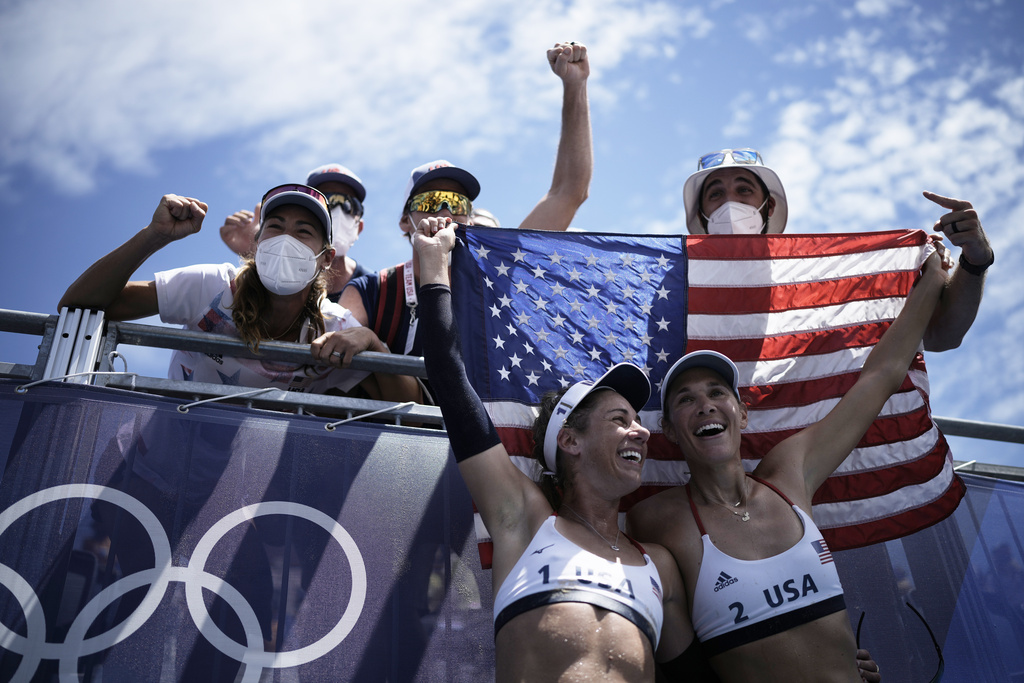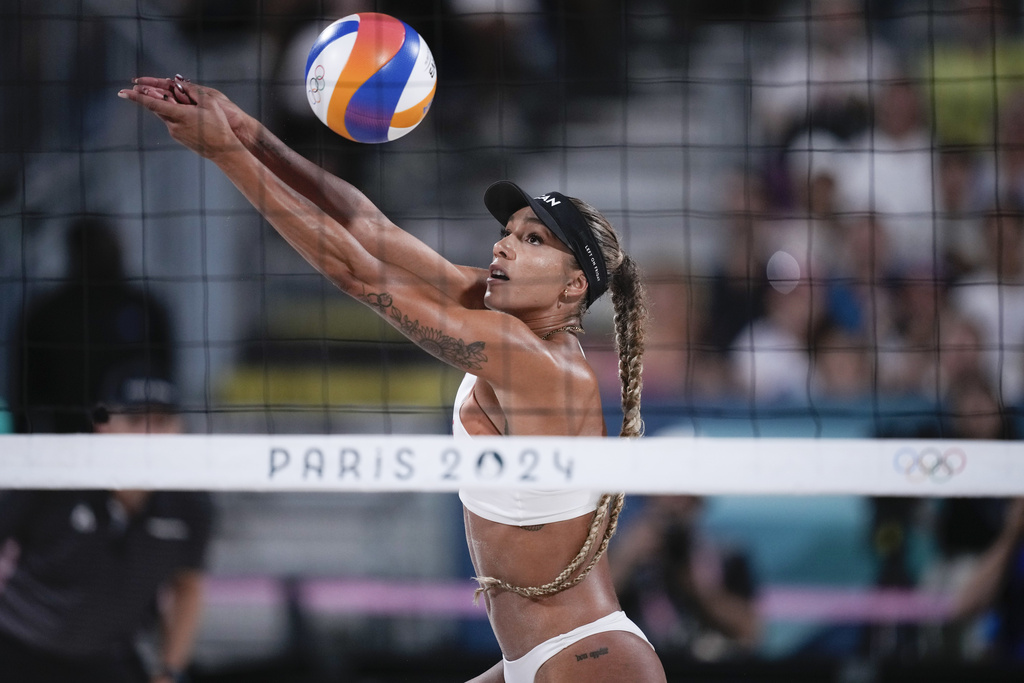Chase Budinger Rejoins Team Atmosphere in AVP’s New League \ Newslooks \ Washington DC \ Mary Sidiqi \ Evening Edition \ The AVP Tour, America’s leading beach volleyball league, is breaking new ground by introducing a team-based league format. This revamped structure assigns city-based teams complete with hometown names, shifting the tour’s dynamic by merging classic two-player competition with a broader team experience. Alongside faster scoring and new venue options, this change aims to attract fans and enhance the sport’s visibility.

AVP’s New Team-Based Format: Quick Look
- New League Concept: City-based teams bring traditional sports vibes to AVP.
- Athlete Support: Players like Budinger enjoy camaraderie reminiscent of team sports.
- Faster Matches: Shortened sets aim to fit broadcast-friendly timeframes.
- Hometown Teams: Teams are based in various cities, building local support.
- End Goal: Season culminates in a Los Angeles championship on Nov. 9-10.
Deep Look
Chase Budinger, once surrounded by teammates during his NBA days, has missed that team-based camaraderie since switching to beach volleyball. Typically, beach volleyball is a sport defined by two-person dynamics, with pairs traveling and competing independently. But for Budinger, who recently represented the U.S. in beach volleyball at the Paris Olympics, the AVP Tour’s new format is a welcome shift, reintroducing the feeling of a team environment. The AVP is restructuring its league by forming city-based teams and adding elements like nicknames, hometown identities, and increased fan engagement—all to make the tour feel more like traditional team sports. The move seeks to capture the interest of a broader audience, bringing a sense of local pride and community support back to the sport.
For Budinger, this change is exciting and refreshing. “It brings that team atmosphere, that team bonding that I missed since my basketball days,” he said in an interview as he transitioned from the Olympic stage to the AVP’s revamped league. “You’re cheering on your teammates and supporting each other, which is something totally different for beach volleyball.” Budinger, who spent seven years in the NBA before reaching the Olympics, is joined by other top beach volleyball stars who are equally eager to embrace this new structure.
AVP’s Evolution: Blending Teams with Tradition
The AVP, long recognized as the U.S.’s premier beach volleyball tour, has introduced this league format in response to evolving sports and entertainment landscapes. Beach volleyball typically thrives under the spotlight of the Summer Olympics every four years, but interest tends to dip during non-Olympic years. By establishing city-based teams with hometown identities, the AVP hopes to maintain fan enthusiasm year-round, creating a more engaging and sustainable format. The league’s restructuring adds familiar elements from traditional team sports to beach volleyball, including city representation, assigned nicknames, and a league-focused standings system that extends throughout the season.
This shift represents a major departure from traditional beach volleyball, where two-player teams usually travel on their own. Under the new AVP format, a men’s pair is matched with a women’s pair, representing cities like the New York Nitro, San Diego Smash, Dallas Dream, Miami Mayhem, Brooklyn Blaze, and Palm Beach Passion. Players no longer compete solely for individual tournament titles but work together to advance their team in season standings, all aiming for the season championship in Los Angeles on November 9-10.
Players Embrace Team Spirit and Camaraderie
For players like Canadian Olympian Brandie Wilkerson, who won silver with Melissa Humana-Paredes in Paris, the AVP’s new team-oriented approach has transformed the tour into a more collaborative environment. Wilkerson and Humana-Paredes now play for the Palm Beach Passion, alongside veteran players like Phil Dalhausser, the 2008 Olympic gold medalist, and Avery Drost. “It’s been fun to get to know these players better and support each other on and off the court,” said Wilkerson. This new setup, she noted, adds an exciting layer to her game, as she learns to support more teammates rather than focusing solely on her partner.
Other AVP teams are drawing on the star power of decorated players, such as Olympic medalist Alix Klineman, who now plays for the Miami Mayhem. Klineman, an Olympic gold medalist, appreciates the hometown-focused model for its potential to engage fans. “It’s similar to other professional leagues where teams represent cities,” she said, highlighting how this can help fans feel connected to their local team. Klineman also likened the challenge of building a fan base to the early days of the Lakers. “Fans don’t happen overnight; it takes time, and people get attached as they see the team grow,” she explained. With a hometown foundation, Klineman believes fans will develop a lasting bond with their local team as the format gains traction.
Enhanced Viewing with Faster, TV-Friendly Matches
One of the AVP’s most noticeable changes is the introduction of shorter sets, now capped at 15 points instead of the traditional 21. This modification creates a faster-paced, high-stakes environment, making it easier to fit matches into a TV broadcast window. By delivering action-packed games that capture attention without overstaying their welcome, the AVP hopes to bring new viewers to the sport. April Ross, a three-time Olympic medalist who earned a gold medal in Tokyo alongside Klineman, praised the new format for its intensity. “Every point counts in these shorter sets, and it’s a huge sprint,” she said. “Strategically, it’s tough—if you start slow, you have limited time to make a comeback.” The quick format also adds to the thrill for spectators, providing a high-energy experience both on-screen and in-person.
The AVP tour has set the season in the fall to capitalize on the Olympic momentum, and by 2025 it plans to return to a summer schedule. This year’s lineup includes standout teams from the Paris Olympics, including U.S. pairs such as Budinger and Miles Evans, Kelly Cheng and Sara Hughes, Taryn Kloth and Kristen Nuss, and an array of international stars. With recognizable faces and top-tier talent, the AVP hopes to keep the Olympic buzz alive year-round, drawing fans to each city matchup as they root for their hometown team.
Building Local Support with Hometown Teams and Venues
Alongside the new team format, the AVP tour has secured high-profile venues typically reserved for major sports, like UCLA’s Tennis Center in Los Angeles and Miami’s Hard Rock Stadium. The next stop on the tour is the Honda Center, home to the Anaheim Ducks. For players accustomed to outdoor beach settings like Manhattan Beach or Copacabana, the shift to structured stadiums offers enhanced amenities. April Ross, reflecting on the venue’s professional feel, noted the comfort of “air-conditioned locker rooms and player lounges,” which aren’t always available at traditional beach events.
This venue change has already boosted fan turnout. Although AVP has not released exact attendance numbers, league representatives report a steady increase in fans at each event, a positive sign for a league looking to establish a lasting connection with local communities. Many AVP players, particularly those from Southern California, hope the tour’s new structure will resonate with fans as Los Angeles prepares to host the 2028 Olympics. Klineman remarked that Los Angeles will need to match the grandeur of Paris, which hosted beach volleyball matches at the Champ de Mars beneath the Eiffel Tower.
AVP’s Goals for Sustained Fan Engagement
By combining beach volleyball’s unique elements with a more relatable, team-based structure, AVP aims to strengthen the league’s presence in U.S. sports culture. Assigning teams to cities gives fans a way to connect with players over multiple seasons, building loyalty and community support. For Budinger, Klineman, and other players, this format not only revives the team-oriented aspects they once enjoyed in more traditional sports but also represents a broader effort to grow beach volleyball’s following. As the league’s championship nears, the AVP hopes that its experiment in combining individual skill with team spirit will build a fan base that will extend beyond the beach and into hometown stadiums across the country.
With a promising season well underway, AVP’s city-based, team-centric approach is setting the stage for a new era in beach volleyball. With the championship scheduled for November in Los Angeles, the league aims to solidify the city’s place in the sport’s history as it builds anticipation for the 2028 Olympics. This innovative format offers a high-energy, TV-friendly experience that AVP hopes will turn casual viewers into dedicated fans, celebrating the players, teams, and their home cities.
Chase Budinger Chase Budinger Chase Budinger Chase Budinger







